Give Me An Example
the challenge of writing about improv
I’m in Stockholm this week at the Midsummer Comedy Fest hosted by Presens Impro. Jim and Sarah and I are here, as are Drunk Theater, as are some folks from The FA and Comedy Cafe Berlin. Lots of friends, it’s very fun.



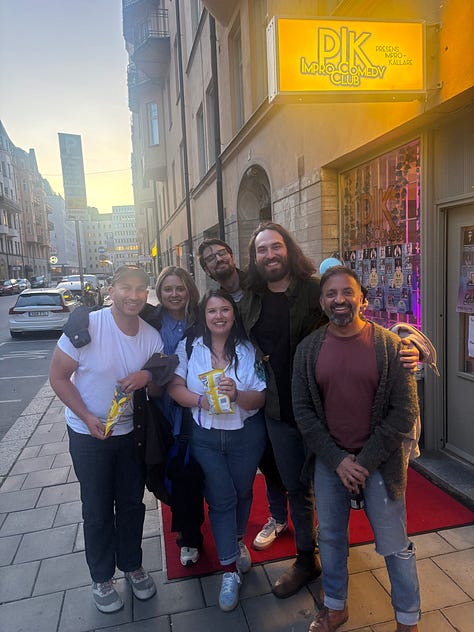

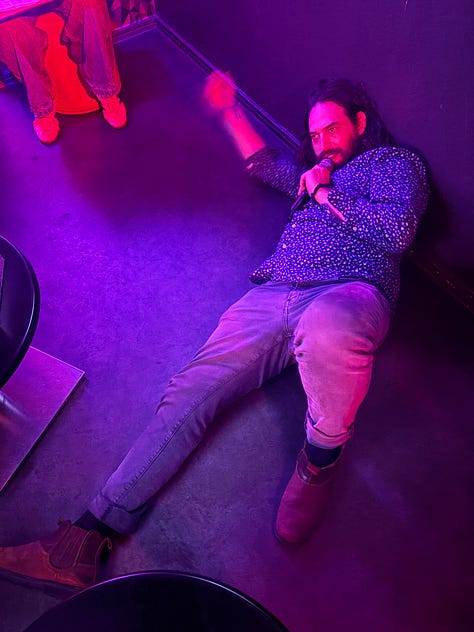
There’s lots of styles in Stockholm: narrative, game-based, short form, dramatic. They’re all friends and play together a lot.
Something I’ve noticed is people know a lot more about game of the scene improv than they used to. I used to be able to roll into festivals and introduce the topics of “justification” and “peas in a pod” and wow them. Now everyone knows that stuff and has harder questions like “are you even good at this?”
Improv Books
I was gifted a book “The Visual Guide To Improv,” written by Stockholm improvisers Anna Harvard and Katarina Wahlberg.
I hadn’t heard of this one. I like it. It’s very comprehensive. Lots of advice, descriptions of forms, and thoughts on both game-based and also narrative improv.
What I like best about it is there’s lots of SHORT ADVICE and EXAMPLES.
I’ve written a lot about improv and I can tell you the two things people remember are:
your short advice
your examples
Short Advice
The larger principles people do not remember. But they remember mantras.
You can describe a general principle, like how cooperation is the cornerstone of good improv or you can say:
“Always pass the fork.”
The Visual Guide reminds me of Jill Bernard’s Small Cute Book of Improv. Jill’s book is about 20 pages long. Mostly very short pieces of advice, all memorable. It’s joyful and inspiring and a really smart strategy for an improv book.
Skip The Basics
Most improv books contain some description of “the basics.” Saying yes, getting suggestions, editing, etc.
But in my experience no one wants to read the basics.
How do I know? Because since I wrote my improv book in 2016 I’ve tried to write like 10 or 15 other improv books!
And when I ask people to read them, they skip the sections on the basics. Or often the whole thing!
But they definitely skip the basics.
The best description of the basics out there is the UCB Comedy Improvisation Manual.
Examples
Besides short advice, the other thing that makes improv writing memorable is good examples. But these are REALLY tough to come by for books. Written down, an improv scene loses so much of its power.
But sometimes I get an example that I think works. Here’s an example.. of such an example.
Point: In an improv scene, it’s better to talk about the past than the future.
Compare a scene where you talk about the future.
Person A: Aw, we got a flat tire!
Person B: Let’s call a mechanic.
versus the past
Person A: Aw, we got a flat tire!
Person B: Not again.
I say this is good. It’s short and it makes its point.
Plugs
The World’s Greatest Improv School: The improv school I run with Jim Woods and Sarah Claspell. We’ve got classes online, in LA and even a few in NYC!
How to Be The Greatest Improviser On Earth - My improv book, available at Amazon. Kindle or print (also on my web site for more if you don’t want to buy from Amazon). It’s a hodge-podge of advice I wrote in 2016 about doing improv. If you’re broke and want a free PDF version just email me and I’ll send it over.
Subscribe!
Paid subscribers to this Substack get their own Q&A columns where they can ask questions. Start a paid subscription to get access to these Q&As.
Everything else is free for everyone. Thank you for reading!


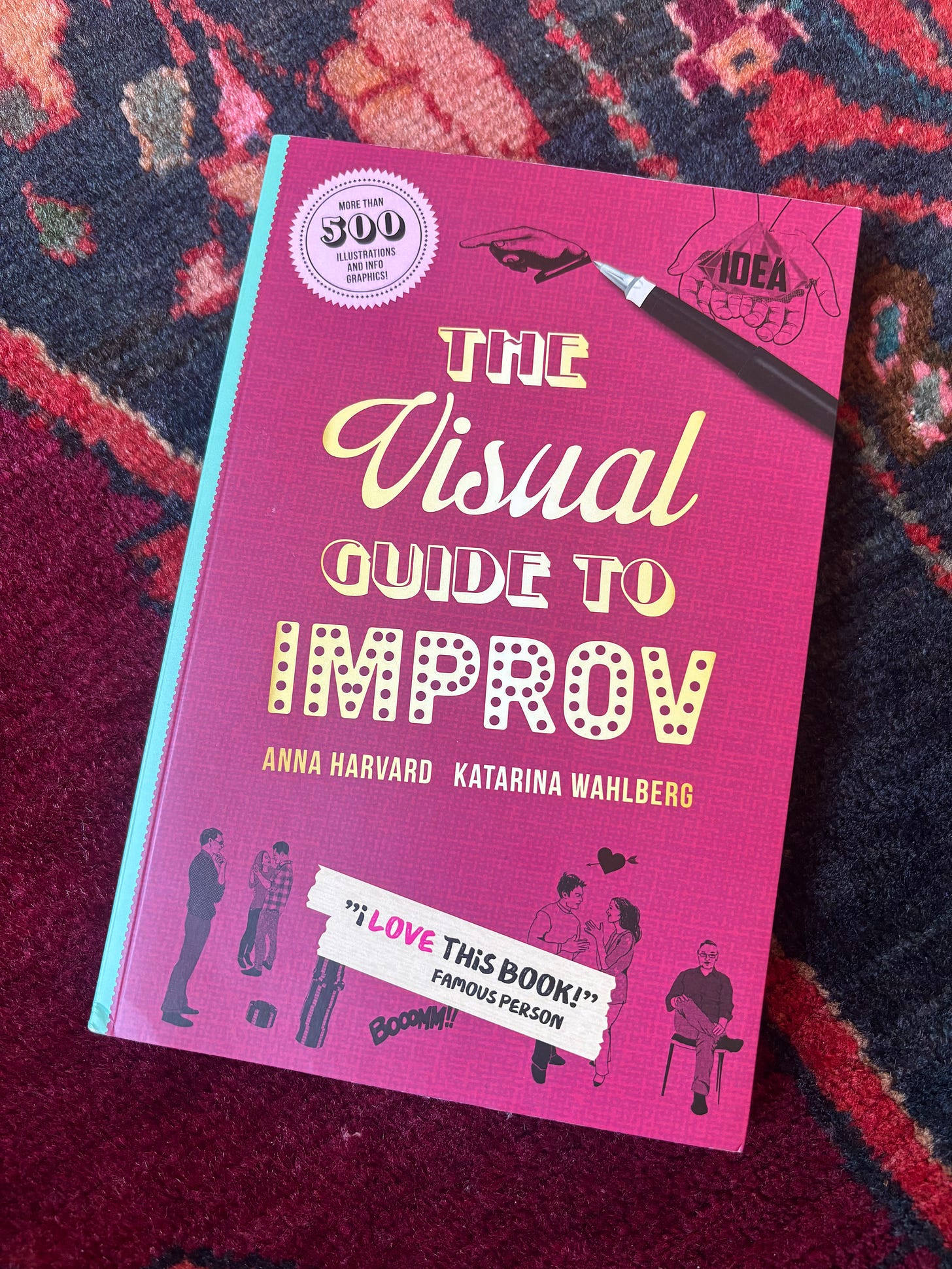
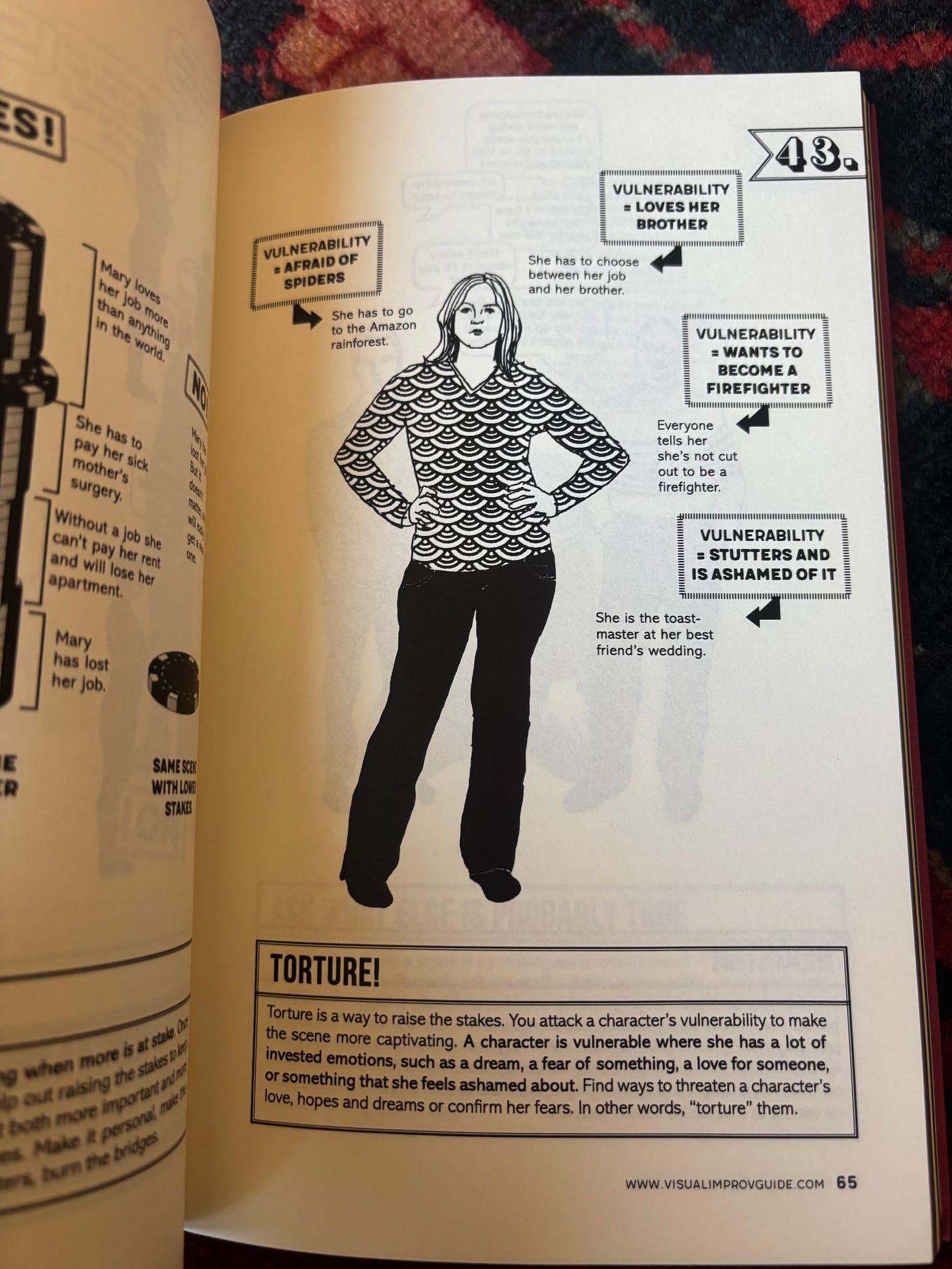
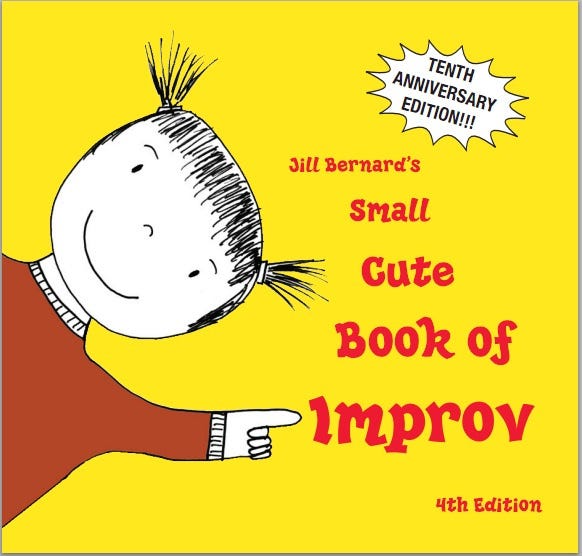


I've been calling your ‘You wanted to see me?’ exercise ‘Farmer’ for ages because of your example
With examples in books I always long for having been there.
So here is the probably bad idea that I think I want to see and probably pay 38$ or more for:
Record a bunch of shows. Write a book (or substack subscription) with links to videos of the lessons those scenes were good examples of.